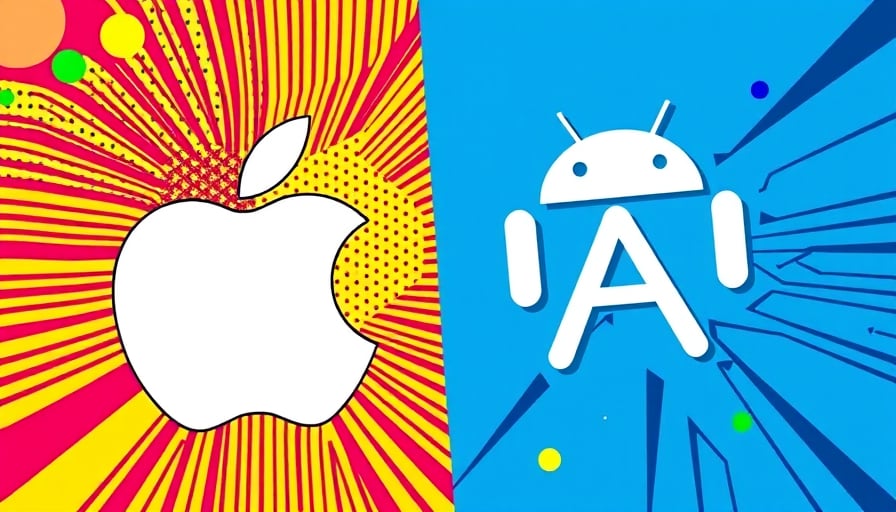Apple’s Strategic Pivot: AI Collaboration and a Low‑Cost Mac Initiative
Apple Inc. has announced two significant moves that signal a broader strategic shift in its approach to both software and hardware. First, the company is partnering with Google to rebuild Siri on a large‑scale artificial‑intelligence (AI) model. Second, Apple is developing a low‑price Mac aimed at students, small businesses, and casual users, positioning itself against Chromebooks and entry‑level Windows laptops. Together, these initiatives reflect a deliberate effort to diversify Apple’s product and services portfolio while leveraging cutting‑edge technology to enhance the overall user experience.
1. Rebuilding Siri on Google’s Large‑Scale AI Model
1.1 Context and Rationale
Siri has long been a cornerstone of Apple’s ecosystem, yet it has lagged behind rivals such as Amazon Alexa and Google Assistant in natural‑language understanding and contextual responsiveness. By integrating a large‑scale AI model developed by Google, Apple can dramatically improve its voice assistant’s performance without incurring the immense costs of building a comparable model in-house.
1.2 Financial Commitment
Apple’s decision to allocate a substantial annual budget for the model underscores the company’s willingness to invest heavily in AI infrastructure. While the exact figure has not been disclosed, the scale of the commitment suggests a multi‑billion‑dollar partnership over several years.
1.3 Strategic Implications
- Competitive Positioning: A more capable Siri could close the performance gap with Google Assistant, potentially increasing user retention across Apple devices.
- Ecosystem Synergy: Enhanced voice capabilities may drive higher engagement with Apple’s services (e.g., Apple Music, Apple Pay, and the App Store).
- Supply‑Chain Considerations: Relying on Google’s infrastructure could introduce new dependencies, prompting Apple to reevaluate its risk management strategies for critical AI services.
2. Low‑Cost Mac for the Mass Market
2.1 Product Concept
Apple’s new Mac is envisioned as an affordable, entry‑level device targeting students, small businesses, and casual users who primarily browse the web or perform document‑centric tasks. The device is expected to compete directly with Chromebooks and budget Windows laptops.
2.2 Development Stage and Market Timing
While still in early production, industry analysts anticipate a formal announcement later this year. The timing aligns with the back‑to‑school cycle and the fiscal year’s Q3 quarter, a period historically significant for Apple’s sales momentum.
2.3 Competitive Landscape
- Chromebooks: Offer low price points and cloud‑centric workflows but lack robust native app support.
- Windows Entry‑Level Laptops: Provide a broader hardware selection but often suffer from fragmented software experiences. Apple’s entry‑level Mac could bridge the gap, offering a polished, secure operating system coupled with a modest price tag.
2.4 Strategic Rationale
- Market Expansion: By penetrating the low‑cost segment, Apple can tap into a larger customer base that is currently underserved by its premium Mac lineup.
- Brand Reinforcement: Demonstrates Apple’s commitment to delivering high‑quality experiences at all price points.
- Revenue Diversification: Adds a new revenue stream that may be less sensitive to the high‑margin dynamics of its flagship products.
3. Broader Industry Patterns and Trends
3.1 AI as a Differentiator
Major tech firms are increasingly investing in AI to differentiate their ecosystems. Apple’s collaboration with Google represents a pragmatic approach: leveraging Google’s AI expertise while retaining control over the user experience.
3.2 Democratization of High‑Quality Computing
The push towards low‑cost devices reflects a broader trend of democratizing access to premium computing experiences. Apple’s strategy signals a recognition that future growth may hinge on scaling its ecosystem to a wider audience.
3.3 Cross‑Industry Partnerships
Apple’s willingness to partner with a direct competitor for AI technology illustrates a shift toward more fluid alliances in the technology sector. Such collaborations may become the norm as companies seek to accelerate innovation without reinventing foundational technologies.
4. Investor and Analyst Perspective
4.1 Valuation Considerations
Investors are scrutinizing whether the AI partnership and low‑cost Mac will translate into tangible revenue growth and margin expansion. Analysts are evaluating potential cost synergies and the risk of cannibalization of Apple’s premium product lines.
4.2 Market Positioning
The moves may reinforce Apple’s positioning as an industry leader that balances premium innovation with mass‑market appeal. However, the success of these initiatives will hinge on execution speed, pricing strategy, and the ability to maintain brand prestige.
4.3 Forward‑Looking Analysis
- AI Integration: If successful, the partnership could accelerate Apple’s AI roadmap, enabling new services such as AI‑driven health monitoring or advanced accessibility features.
- Low‑Cost Mac Launch: A well‑timed launch could capture significant market share in the education and small‑business segments, potentially offsetting declining sales of higher‑end Macs.
5. Conclusion
Apple’s dual strategy—leveraging Google’s AI capabilities for Siri and entering the low‑cost Mac market—highlights a nuanced approach to growth and competitiveness. By combining external expertise with its strong brand and ecosystem, Apple seeks to broaden its customer base while staying ahead of technological trends. The outcomes of these initiatives will likely influence not only Apple’s financial performance but also the broader trajectory of consumer technology innovation.
